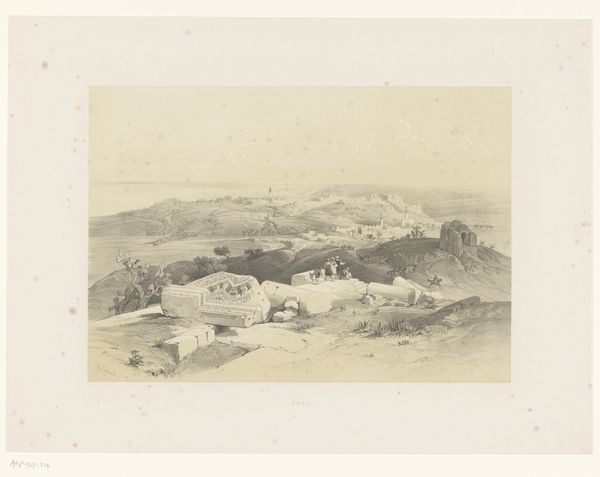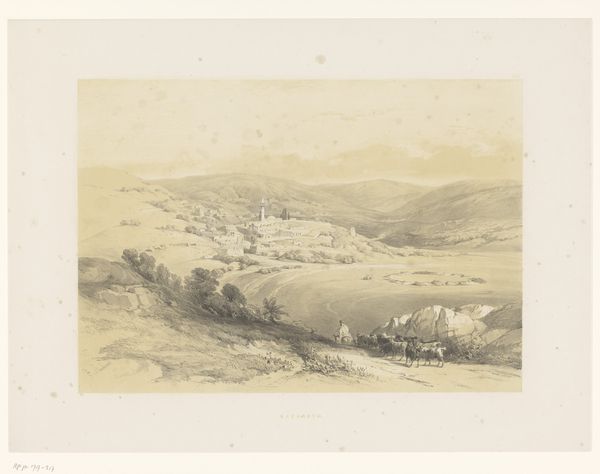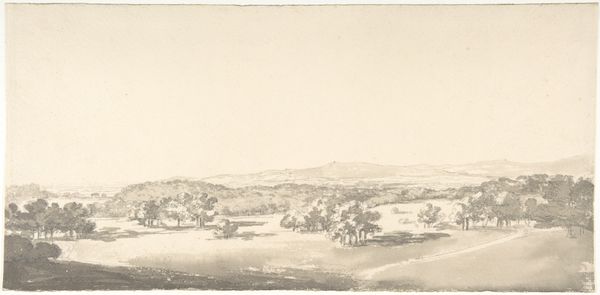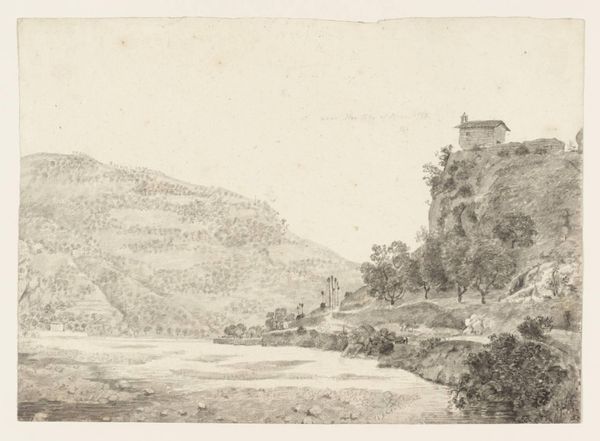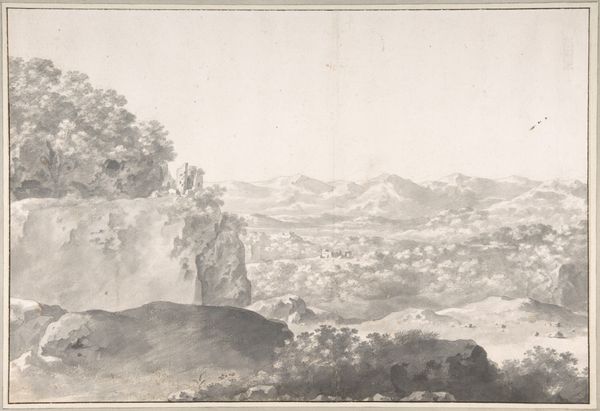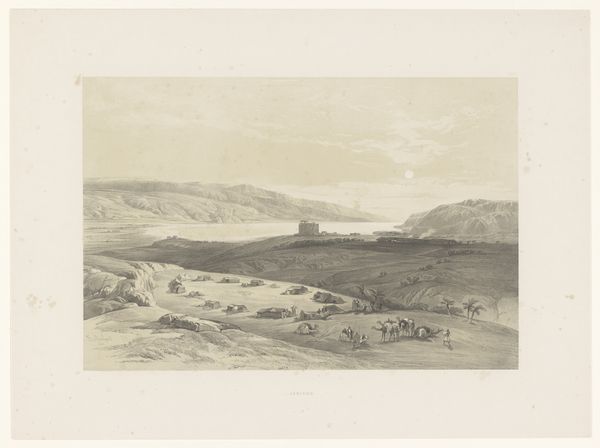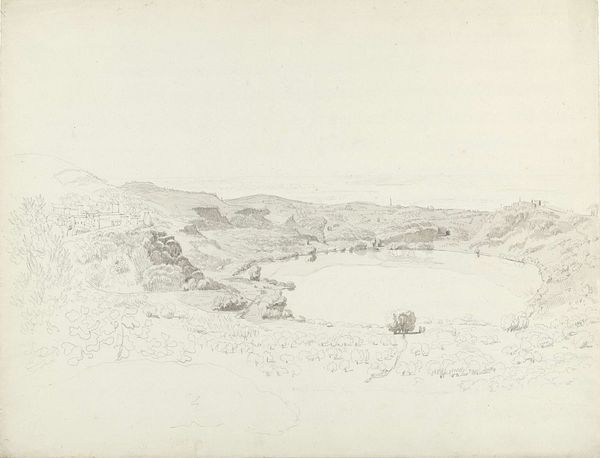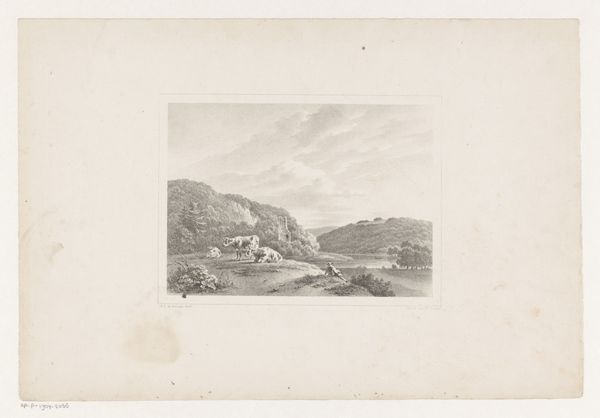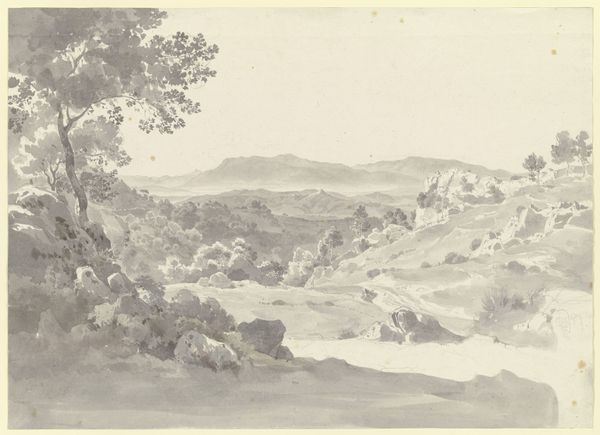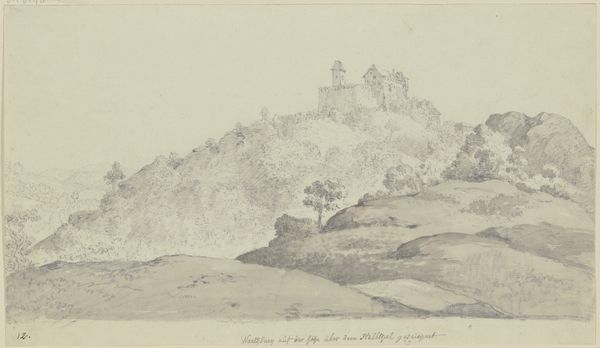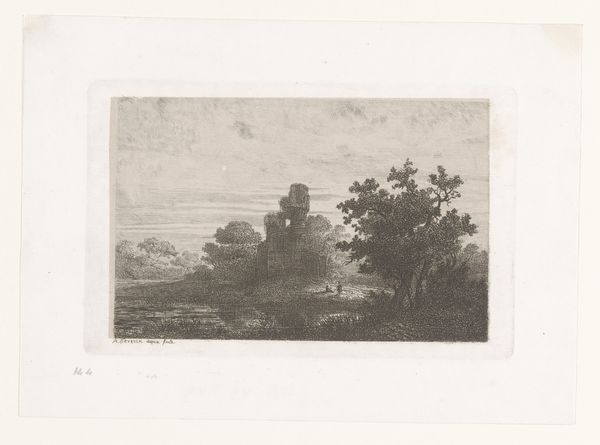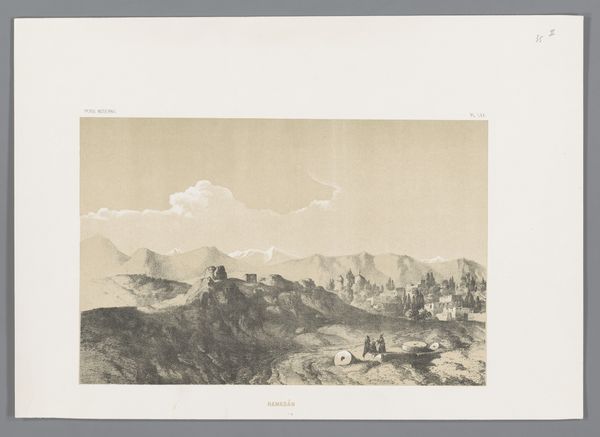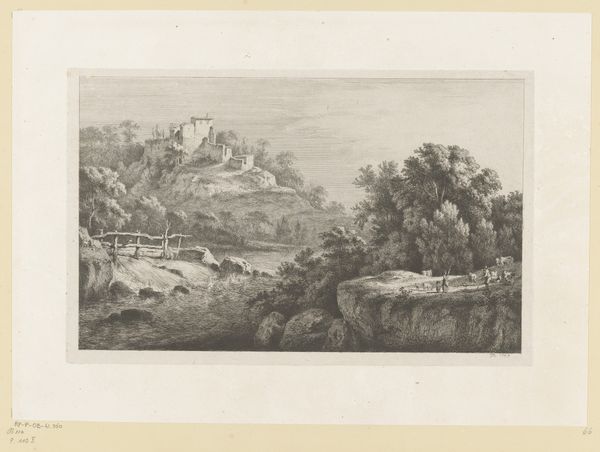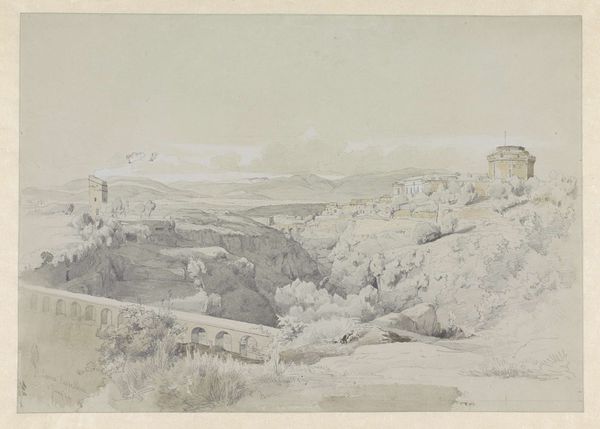
Wiesental an felsigen Höhen, auf welchen eine Burgruine und mehrere Häuser liegen
0:00
0:00
drawing, pencil
#
drawing
#
baroque
#
landscape
#
pencil drawing
#
pencil
#
14_17th-century
Copyright: Public Domain
Editor: So, we're looking at "Wiesental an felsigen Höhen, auf welchen eine Burgruine und mehrere Häuser liegen" by Cornelis van Poelenburch, made with pencil on paper. It’s… sepia toned, soft. The textures seem built up with very deliberate marks. What stands out to you most about it? Curator: I'm struck by how the drawing highlights the relationship between labor and landscape. Poelenburch's use of pencil, a relatively accessible and readily available material, allows for a democratized representation of the terrain. Consider the quarries nearby -- what human labor extracted to build that castle ruin. Does it invite questions about the socio-economic forces shaping even these "natural" settings? Editor: I hadn't considered the "accessibility" of the medium. The pencil work seems quite refined, almost delicate, not rough or crude like, say, charcoal. How would that contrast, using a finer grade of pencil? Curator: Precisely! It’s not just the tool itself, but the skilled labor involved in its use that interests me. While seeming ‘delicate,’ the pencil enabled this drawing to function potentially as a preparatory sketch for larger, commissioned works, translating this landscape into a marketable commodity, the product of human activity and consumption. Editor: So you're saying the apparent delicacy is misleading; it masks the labor involved and its potential to feed into a larger commercial art market? I hadn’t thought about it like that. Curator: Exactly. And consider where the materials came from; the pencil itself. Examining the materiality and process gives insight into how the world becomes art and then moves into consumption. Editor: That's a fascinating way to re-evaluate this seemingly straightforward landscape. I’ll definitely look at landscapes differently now. Thanks. Curator: A pleasure. Always remember to consider the economic contexts of materials.
Comments
No comments
Be the first to comment and join the conversation on the ultimate creative platform.
